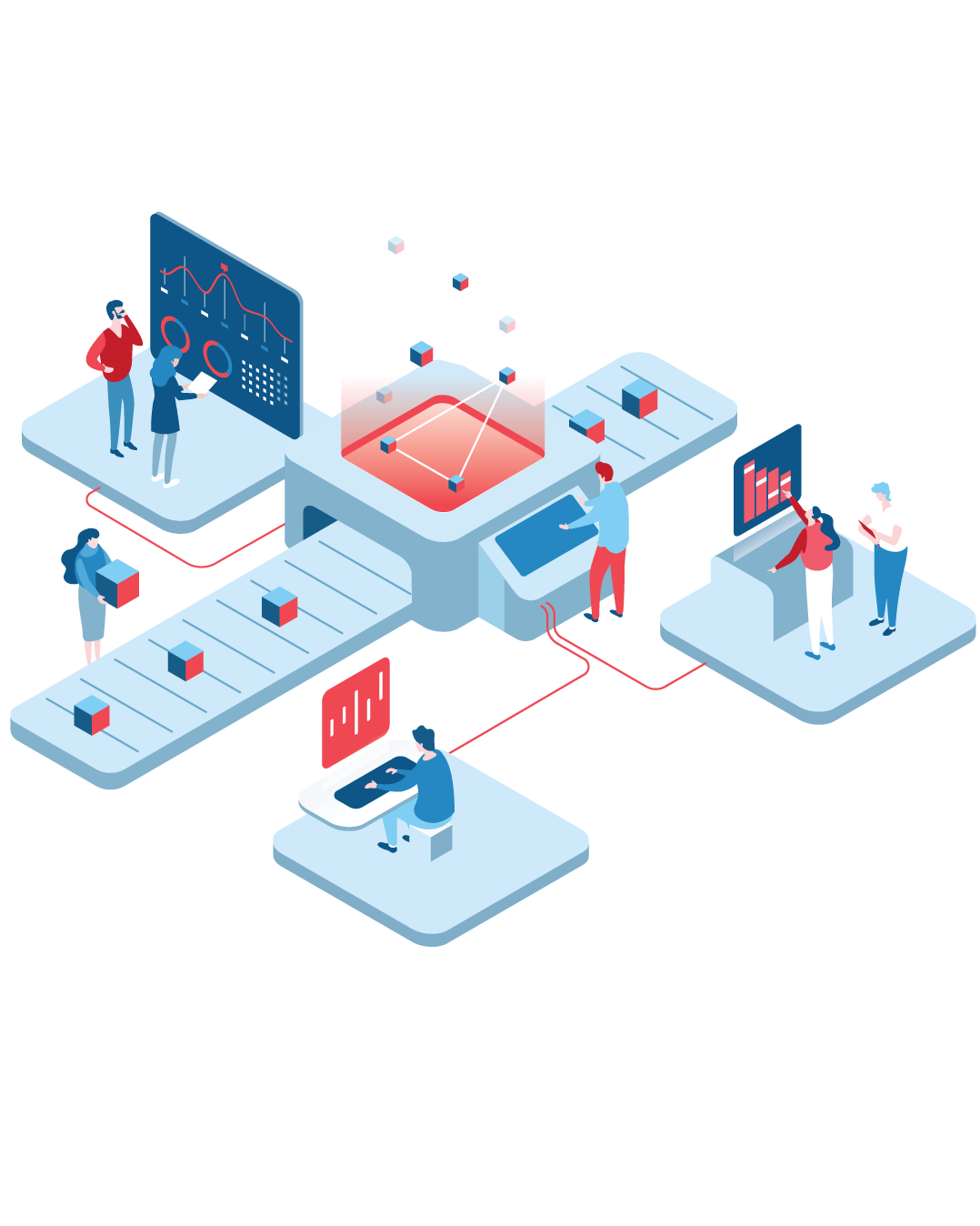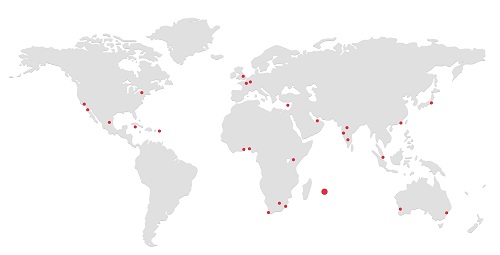ENTERPRISE SOFTWARE DEVELOPMENT
Process of creating software applications specifically designed for use within large organizations or businesses.

Process of creating software applications specifically designed for use within large organizations or businesses.
Enterprise software development refers to the process of creating software applications specifically designed for use within large organizations or businesses. These applications typically have complex requirements, as they need to support a wide range of business processes and integrate with other systems already in use.
Enterprise software development involves a number of stages, including planning, designing, coding, testing, and deployment. The planning stage involves understanding the business requirements, identifying stakeholders, and defining the scope of the project. The design stage involves creating a software architecture and user interface that meets the business requirements, while the coding stage involves writing the actual software code.
Once the software has been written, it must be thoroughly tested to ensure it meets the requirements and is free of bugs. This testing may include unit tests, integration tests, and acceptance tests. Once the testing is complete, the software is deployed to the organization’s IT infrastructure and made available to users.
Enterprise software development is typically carried out by teams of developers, often using agile development methodologies to ensure the software is delivered on time and within budget. The software may also be maintained and updated over time to meet changing business requirements or to fix bugs that are discovered after deployment.
DON’T FOLLOW DIGITAL TRENDS. START THEM.
There are many types of enterprise software available, each designed to support different aspects of business operations. Some common types of enterprise software include:
Enterprise Resource Planning (ERP) software: This type of software is designed to integrate and manage all aspects of a company’s operations, including finance, human resources, procurement, manufacturing, and supply chain management.
Customer Relationship Management (CRM) software: This type of software helps businesses manage their interactions with customers, including sales, marketing, and customer support.
Business Intelligence (BI) software: This type of software helps businesses analyze and understand their data, making it easier to make informed decisions and identify trends and patterns.
Supply Chain Management (SCM) software: This type of software helps businesses manage their supply chain operations, including sourcing, procurement, inventory management, and logistics.
Human Resource Management (HRM) software: This type of software helps businesses manage their human resources operations, including employee records, payroll, benefits, and performance management.
Content Management System (CMS) software: This type of software helps businesses manage their digital content, including website content, documents, and multimedia files.
Project Management software: This type of software helps businesses manage their projects, including tasks, timelines, and resources.
Collaboration software: This type of software helps businesses collaborate and communicate with team members and stakeholders, including email, instant messaging, and video conferencing tools.
These are just a few examples of the many types of enterprise software available. We design software to support your specific business processes and functions, and businesses may use a combination of different types of software to support their operations.

Enterprise software development refers to the process of creating software applications specifically designed for use within large organizations or businesses. These applications typically have complex requirements, as they need to support a wide range of business processes and integrate with other systems already in use.
Enterprise software development involves a number of stages, including planning, designing, coding, testing, and deployment. The planning stage involves understanding the business requirements, identifying stakeholders, and defining the scope of the project. The design stage involves creating a software architecture and user interface that meets the business requirements, while the coding stage involves writing the actual software code.
Once the software has been written, it must be thoroughly tested to ensure it meets the requirements and is free of bugs. This testing may include unit tests, integration tests, and acceptance tests. Once the testing is complete, the software is deployed to the organization’s IT infrastructure and made available to users.
Enterprise software development is typically carried out by teams of developers, often using agile development methodologies to ensure the software is delivered on time and within budget. The software may also be maintained and updated over time to meet changing business requirements or to fix bugs that are discovered after deployment.
Better insight of business data from various aspects, enhance operation and increase sales. Recent AI Insights into artificial intelligence, machine learning, and beyond.
WDG is helping companies worldwide achieve blockchain implementation for education, ideation, strategy, prototyping, and development. Information to be recorded and distributed.
We are able to deliver different services through the Internet or cloud computing. These resources include tools and applications like data storage, servers, databases, networking, and software.
ERP refers to a software that organizations use to manage day-to-day business activities such as accounting, project management, risk management, and supply chain operations.
We'll update you with new in Artificial Intelligence, Machine Learning, Robotic Process Automation, Edge Computing, Quantum Computing, Virtual Reality and Augmented Reality, Blockchain & IoT
Security refers to methods, tools used to defend an organization's digital assets. The goal of security is to protect assets and services from being disrupted, stolen or exploited by unauthorized users

Yes, enterprise software can be very valuable for businesses. Enterprise software is designed to support and improve various aspects of a business’s operations, making it easier for companies to manage their resources, communicate with stakeholders, and make informed decisions based on data analysis.
Enterprise software can help businesses to streamline their operations, automate routine tasks, and reduce the potential for errors or delays in key business processes. This can result in increased efficiency and productivity, as well as cost savings, as businesses can more effectively manage their resources and reduce waste.
In addition, enterprise software can provide businesses with a range of insights and analytics that can help them to make informed decisions and improve their overall performance. For example, business intelligence software can help companies to better understand their data, identify trends, and forecast future performance, while customer relationship management software can help businesses to better engage with customers and build stronger relationships.
Overall, enterprise software can be a powerful tool for businesses looking to improve their operations, increase efficiency, and gain a competitive edge in their industry. However, it’s important for businesses to carefully evaluate their needs and select the right software solutions to meet their specific requirements and goals.

The key difference between enterprise software and Software as a Service (SaaS) is in how the software is delivered and deployed.
Enterprise software is typically installed on a company’s own servers or on-premises infrastructure. The software is purchased and licensed by the company and is managed by the company’s own IT team. Enterprise software is designed to meet the specific needs of the company and can be customized or integrated with other systems as required.
On the other hand, SaaS software is delivered over the internet and hosted by the software provider. The software is accessed through a web browser and is typically sold on a subscription basis, with the provider managing the software updates and maintenance. SaaS software is designed to be more easily scalable and accessible from anywhere with an internet connection.
Another key difference is in the cost structure. Enterprise software is typically purchased with a one-time fee, with ongoing maintenance costs for updates and support. SaaS software, on the other hand, is usually sold on a recurring subscription basis, with the cost based on the number of users or level of usage.
Overall, both enterprise software and SaaS have their advantages and disadvantages, and the choice between the two will depend on a company’s specific needs and priorities. Enterprise software may be preferred by companies that have complex requirements or require a high degree of customization, while SaaS may be preferred by companies looking for greater flexibility and scalability, as well as lower upfront costs.






WDG end-to-end enterprise application development refers to the process of creating a software application that supports a business’s entire workflow, from initial data capture through to final reporting and analysis. This type of software is often referred to as a business application or enterprise software.
The development of an end-to-end enterprise application involves multiple stages, including requirements gathering, design, development, testing, deployment, and ongoing maintenance and support. The process requires a thorough understanding of the business processes and needs of the organization, as well as a deep understanding of software development best practices.
The requirements gathering stage involves understanding the business processes and data flows within the organization, as well as identifying the key stakeholders and user groups that will be using the application. This information is then used to create a detailed design specification that outlines the functionality, user interface, and integration points for the application.
The development stage involves writing the code for the application, using best practices for software design and development to ensure the application is robust, scalable, and maintainable. The testing stage involves testing the application thoroughly to ensure it meets the design specification and is free from bugs or errors.
Once the application is developed and tested, it is deployed to the organization’s IT infrastructure, where it can be accessed by users. Ongoing maintenance and support is then provided to ensure the application continues to meet the changing needs of the organization.
Overall, end-to-end enterprise application development is a complex process that requires a deep understanding of the organization’s business processes and software development best practices. However, the resulting application can provide significant benefits to the organization, including increased efficiency, improved data management, and better decision-making capabilities.

Healthcare Technologies understands natural language and is capable of reacting to questions asked of it. The system mines patient data & other accessible data sources to shape a theory, which then presents with a certainty scoring schema. A computer program used to answer questions and assist patients, to help calendar follow-up appointments or aiding patients through the billing procedure & virtual assistants.

AI can automate reviewing, giving teachers additional time. AI can assess students and adjust to their requirements, helping them work at their particular pace. AI tutors can give extra help to students, ensuring they remain on track. AI could change where and how students learn, perhaps even replacing some teachers task.

Robotic process automation is being connected to highly repetitive tasks normally performed by people. Machine learning calculations are being coordinated into analytics and CRM platforms to reveal data on how to best way to all the more likely serve customers. We have been consolidated into sites to give quick service to customers. Automation of job positions has also turned into an idea among academics.
| 1 | SINGAPORE | REPUBLIC OF KOREA | 93.23% |
| 2 | JAPAN | GERMANY | 80.43% |
| 3 | SWEDEN | DENMARK | 70.35% |
| 4 | ITALY, BELGIUM | USA | 67.87% |
| 5 | TAIWAN | UNITED KINGDOM | 65.94% |
| 6 | CANADA | FRANCE | 64.34% |

Robot density is a measurement that tracks the number of robots per 10,000 workers in an industry. This shows more countries are turning to automation to fill their manufacturing needs.

Blue Prism is a Robotic Process Automation software. It provides businesses and organizations with an agile digital workforce.

Automation Anywhere is a developer of robotic process automation (RPA) software.

UiPath is Robotic Process Automation software. It helps organizations efficiently automate business processes.
Why we are different? Super Web Development LLP brings together digital innovation Architecture and Technology with the best business ideas. Don’t follow Digital Trends.. Start them.
Don’t miss out on thousands of super cool packages and promotions

